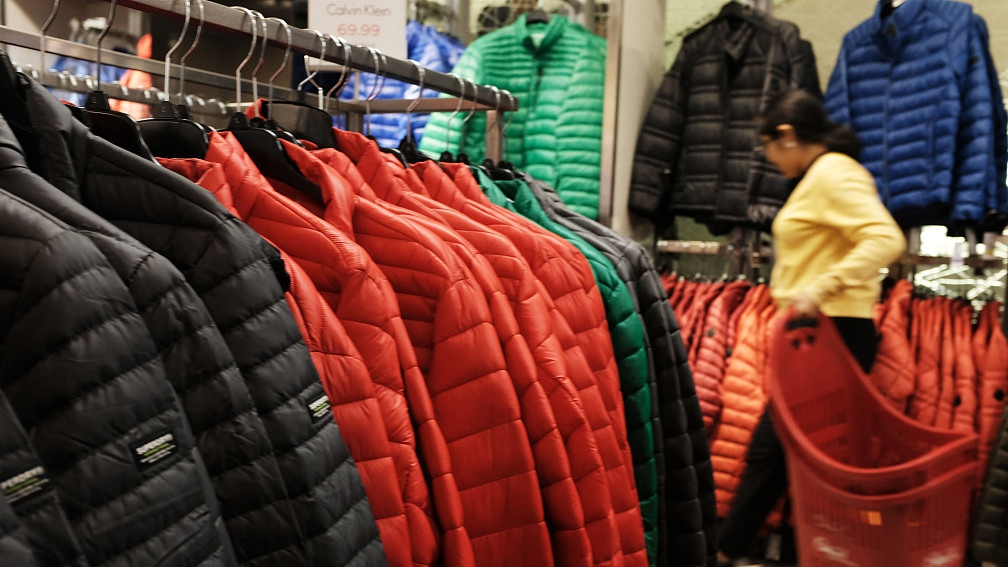
Analysis
17:56, 14-May-2019
Who is paying for Trump's tariffs?
Liu Jianxi

China-U.S. trade spats escalated on Monday as Washington released a list of the 300 billion U.S. dollars worth of Chinese products that could face up to 25 percent tariffs. The move was immediately retaliated by China's new tariffs on 60 billion U.S. dollars in American goods.
While U.S. President Donald Trump repeatedly boasted on social media that China will pay for the new tariffs, the reality is the opposite. Statistics show that it is American businesses and customers that are bearing the majority costs of Trump's capricious trade war.
To begin with, the increased tariffs mean more taxes that American companies and individuals will have to pay for the imported Chinese goods. While some economists argue that Chinese exporters may lower their prices in an attempt to be more competitive in the U.S. market, Goldman Sachs' latest analysis shows that "no decline in the prices (exclusive of tariffs) of imported goods from China that faced tariffs."
The rising prices, without suspense, have fallen on ordinary American families. In an academic study published in March, economists from the Federal Reserve Bank of New York, Princeton University and Columbia University concluded that "the full incidence of the tariff falls on domestic consumers, with a reduction in U.S. real income of 1.4 billion U.S. dollars per month by the end of 2018." The duties imposed on a wide array of imports cost American businesses three billion U.S. dollars a month in additional tax costs, the paper calculated.
The conclusion is echoed by the World Bank's chief economist Pinelopi Goldberg. American farmers and blue-collar workers who supported Trump in the 2016 general election are ironically the biggest victims of the president's trade war, according to Goldberg.

Chinese made hats are displayed for sale at a Manhattan department store on May 7, 2019 in New York City. /VCG Photo
Chinese made hats are displayed for sale at a Manhattan department store on May 7, 2019 in New York City. /VCG Photo
Statistics from the Trade Partnership Worldwide consultancy lead to the same conclusion – ordinary Americans are paying the most of the costs of Trump's tariffs. The annual spending of average American family of four will see a rise of 767 U.S. dollars on household goods if a 25 percent tariff is imposed on 250 billion U.S. dollars in Chinese goods, reducing American employment by 934,000. The figure will be 2,294 U.S. dollars if the same-level tariff is imposed on the remaining imports from China, killing 2.1 million jobs in a year.
The U.S.' heavy dependence on Chinese products has made the situation even worse. Among more than 6,000 tariffed items on the previous 200 billion U.S. dollars list are 1,150 items on which the U.S. is over 50 percent dependent on Chinese imports, according to Chinese Academy of International Trade and Economic Cooperation.
In the first four months of 2019, China's exports to the U.S. dipped by 4.8 percent. U.S. exports to China, in comparison, plunged 26.8 percent during the same period. This means while Chinese customers can easily find alternatives to American goods, American customers are heavily relying on Chinese products.
Trump's advice that American customers can buy alternatives in domestic market or from non-tariffed countries is thus unrealistic in the era of global integration. China is gradually becoming a source of global innovation and its cost-effective products cannot be easily replaced in the U.S. market.
Moreover, Beijing has seen prosperous trading relations with the EU and the ASEAN in the past decades. The country's trade volumes with the Belt and Road countries rose by 9.1 percent in the first four months of 2019, while the figure with the United States is seeing a downward trend.
Undeniably, China will also suffer. But the Chinese economy is resilient enough to go through the trade war. Even if American customers were forced to abandon Chinese imports, there are only 124 tariffed items for which China is more than 50 percent dependent on the U.S. market for export. "Made in China" products have been the most sought-after across the globe.
China's diversified trading partners mean the country can easily find alternative buyers in face of Trump's tariffs. Before voicing support for Trump's 2020 election campaign, American citizens should think twice – who on earth is paying for their president's tariffs?
(If you want to contribute and have specific expertise, please contact us at opinions@cgtn.com)

SITEMAP
Copyright © 2018 CGTN. Beijing ICP prepared NO.16065310-3
Copyright © 2018 CGTN. Beijing ICP prepared NO.16065310-3